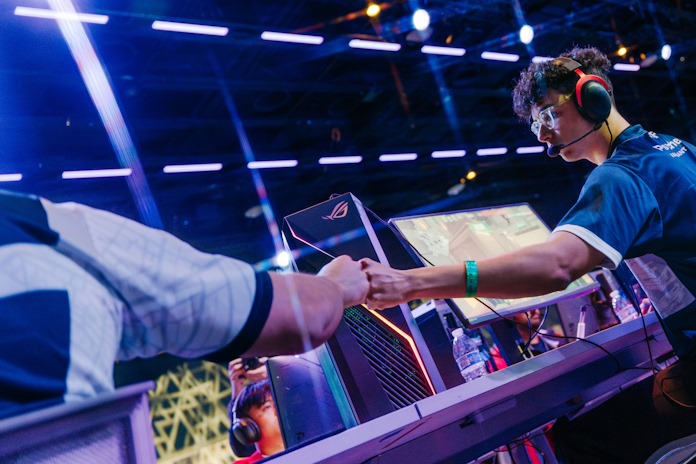Building an esports lab in your high school or college offers a host of benefits, not just to students in video games, but to your entire academic community. As esports continues to rise in popularity, more educational institutions are recognizing the value of building dedicated spaces for competitive gaming. At ASUS, we’ve worked with many esports programs around the country, helping students and educators turn their passion for esports into vibrant, successful programs. Along the way, we’ve found that three key ideas can make a big difference when it comes to securing institutional support for a new esports program. Here’s what we’ve learned.
1: Esports programs build student engagement and retention
Simply put, an active esports program can have a transformative effect on student engagement and retention. While traditional athletics and clubs have long helped foster school spirit and belonging, esports offers a crucial pathway for students who may not connect with other extracurriculars.
Esports is inherently collaborative and inclusive. Gaming in general has evolved into a cultural touchpoint that attracts students from all cultural backgrounds, ethnicities, and identities, creating spaces where students can engage with a diverse community. Importantly, esports often attracts those who may not be involved in sports, music, or arts, giving schools another pathway to building student engagement.
The collaborative nature of team-based games encourages communication, problem-solving, and strategic thinking. On a professional level, teams typically include not just players, but also coaches, strategists, announcers, event planners, and technical crew, offering leadership and support roles for a wide array of personalities and skill sets.
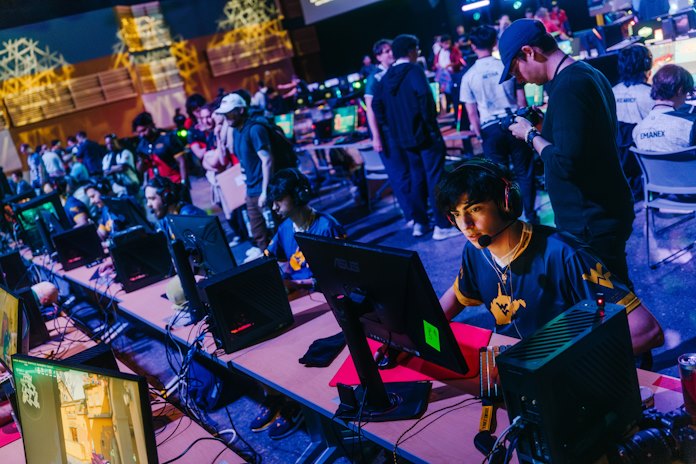
Research and anecdotal evidence suggest that involvement in esports increases students’ sense of belonging and pride in their institution. Many students who participate in esports programs report higher academic motivation, more consistent attendance, and a stronger connection to their peers and school community. Educators have noted that offering an esports pathway can reach students who otherwise may have felt marginalized or disengaged, giving them a new reason to come to school, participate actively, and develop valuable social and technical skills via CTE (Career and Technical Education) programs.
2: The hardware used for esports is highly versatile and suitable for a wide range of applications
One of the biggest misconceptions about building an esports lab is that it requires gaming-only equipment that serves little purpose outside of competition. In reality, the hardware used for esports has far-reaching applications beyond gaming.
Think of the typical specs for a modern esports-ready computer: a powerful processor, a robust graphics card, and a versatile motherboard. Any PC equipped with this hardware can tackle some of the most demanding academic and creative workloads. For example, the same computers used for esports can be employed for video editing, digital art, CAD and 3D modeling, animation, data science, programming, virtual labs, robotics, and other STEAM applications.
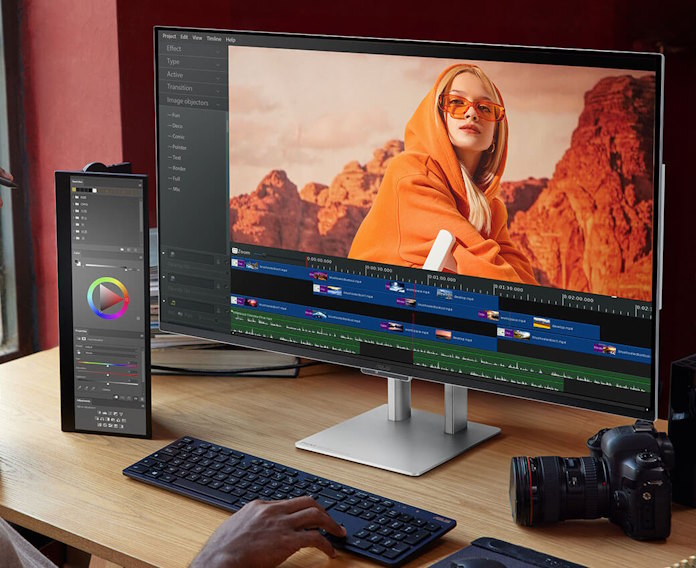
This versatility means a well-equipped esports lab can easily double as a multipurpose computer lab. Students can use these machines during the school day for class projects, multimedia assignments, and technical training, even if they’re never going to touch a competitive game. After school, the same space transforms into a vibrant hub for esports teams, practice, and tournaments.
The versatility of PC hardware means that esports have proven to be a gateway to connect students with STEAM education. Esports can be leveraged to promote STEAM education by linking gaming with real-world skills in information technology, engineering, digital media, and communications. When students see the tangible career pathways connected to their interests, such as game design, software development, broadcasting, and event management, they’re more likely to stay engaged in their studies and complete their programs.
Beyond the computers themselves, many esports labs include broadcast equipment such as cameras, capture cards, audio mixers, and green screens. These tools are highly valuable for students interested in broadcasting, podcasting, journalism, and digital media production. Multiple monitors, high-quality microphones, and broadcast lighting are assets for presentations and content creation across different curricula.
Building an esports lab does more than cater to your school’s gamers. You’re investing in a technological infrastructure that serves a broad spectrum of students and academic programs, preparing them for a range of future careers both in and beyond the gaming industry.
3. An esports lab is more affordable to build than you might think
A third (and often surprising) truth about building an esports lab is that it can be done on a reasonable budget. While high-end gaming PCs and peripherals do represent an investment, gaming hardware is available at a wide range of price points. Also, competitive esports games don’t always demand the most powerful hardware, so the costs of building an esports lab can often be comparable to equipping a traditional computer lab with similarly capable hardware.
The actual cost depends on several factors: the number of stations, the scope of broadcast equipment, and the size of the space. A typical esports lab for a high school or college might consist of 6 to 18 PCs, each with a 24” to 27” monitor, keyboard, gaming mouse, and headset. You can expect to pay more for top-tier components, but many schools have successfully started with mid-range systems that can be easily upgraded over time. Some institutions even repurpose existing spaces, like under-used computer labs or classrooms, reducing renovation expenses.
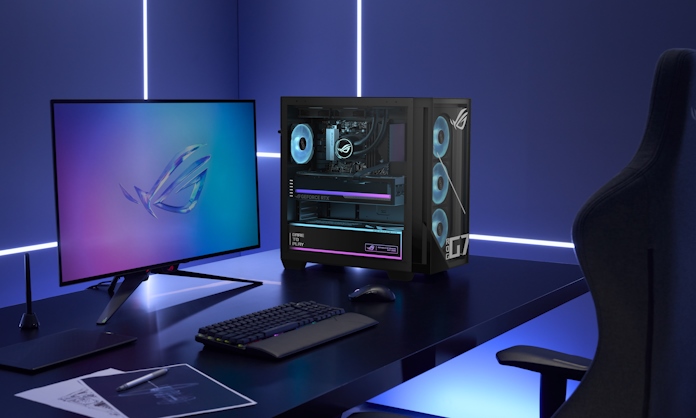
The range of gaming monitors available from ASUS and ROG showcases the options available for your esports lab. The students at your institution would be floored by a set of premium ROG Swift OLED PG27AQDM monitors, which use cutting-edge OLED tech to deliver sharp visuals, supremely clear animation, and vibrant colors. But the more-affordable ROG Strix XG27ACS is armed with all the essentials for esports, and it’ll give your institution an easier starting point for getting your lab off the ground.
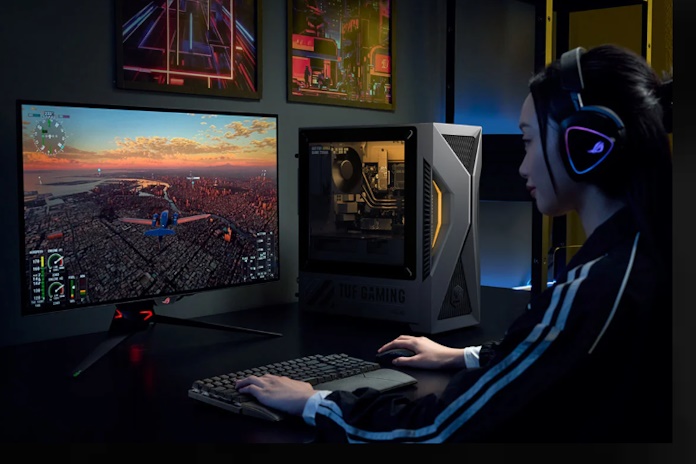
When it comes to the PCs that your students will use in your new esports lab, you have a variety of options. Some institutions prefer a set of laptops which can be kept secured in a cart. A system like the ROG G700 offers gaming power and excellent cooling in a design that your students will love, and since it uses standard PC components, your IT staff will be more than equipped to maintain and upgrade this PC over time. An even more affordable option in a smaller form factor is the ASUS TUF Gaming T500. Featuring robust gaming performance, a wide range of input and output ports, and efficient cooling, this prebuilt desktop gaming PC is perfect choice for getting an esports lab up and running.
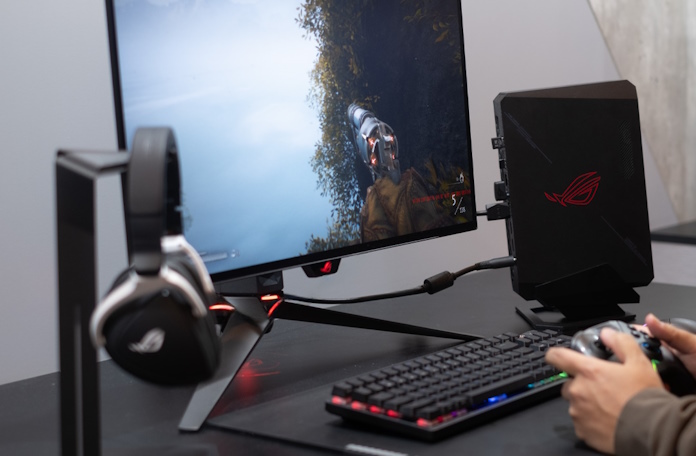
Many esports labs end up being restricted in size. If you need a space-saving PC option, consider the ROG NUC. This ultra-compact mini-PC packs outsized PC performance in a form factor that’s easy to fit in any scenario. The new TUF Gaming F16 laptop is also a compelling choice here, as it offers a large screen, potent gaming hardware, and user-upgradable components. Prebuilt desktop PCs are another tempting pick. To accompany either of these PC, we recommend similarly compact hardware, such as the slim-and-trim ROG Falchion RX Low Profile keyboard and ROG Harpe Ace Aim Lab Edition gaming mouse.
Another important point: setting up an esports lab is not a one-size-fits-all endeavor. Schools can tailor their setups based on budget, goals, and available resources. Some choose to focus initially on one or two games and gradually expand, while others invest in multipurpose labs that can support a range of academic and extracurricular activities.
An esports program is within your reach
At ASUS, we understand the challenges of designing hardware for the needs of esports. Many of our designers and engineers are gamers themselves, and have a lifelong passion for taking gaming to the next level. But even more than that, we’re passionate about education. Schools all over the world have found that esports programs give them a unique opportunity to increase student engagement, build vital career skills, and bolster academic performance. We’re committed to supporting our partners in education with complete esports solutions.
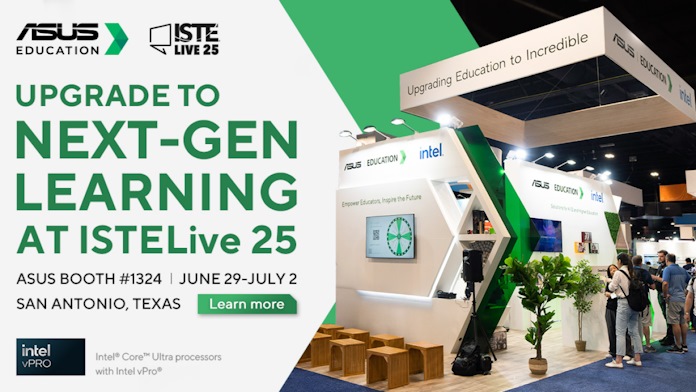
One way that you can learn more about ASUS products for esports is at the annual ISTE Conference and Expo. Recognized the world around as the most comprehensive educational technology conference in the world, ISTE brings together educators and education leaders to engage in hands-on learning, exchange ideas and network with like-minded thinkers seeking to transform learning and teaching.
Between June 30th and July 2nd, join us in person at the Henry B. Gonzalez Convention Center in San Antonio, Texas to see our products in action. There, you can get hands-on experience with our latest products for education, participate in a variety of activities, and meet our education experts and sales representatives in person. We will also host live sessions with industry thought leaders.

